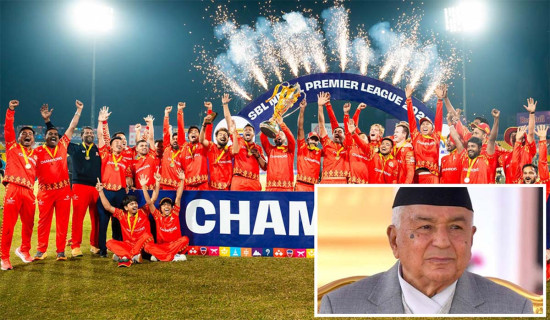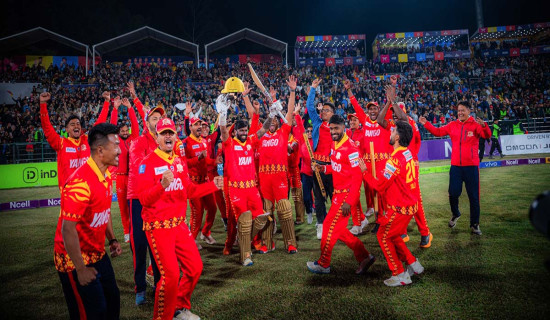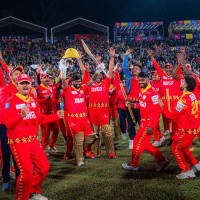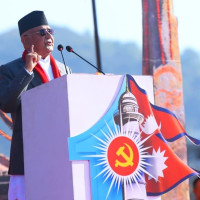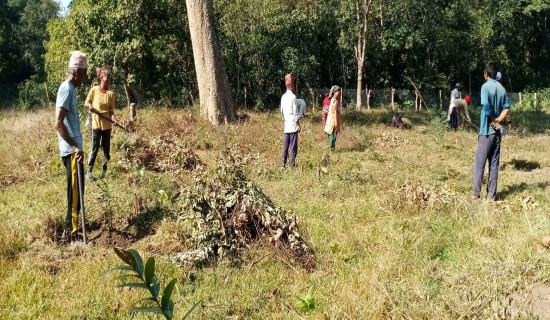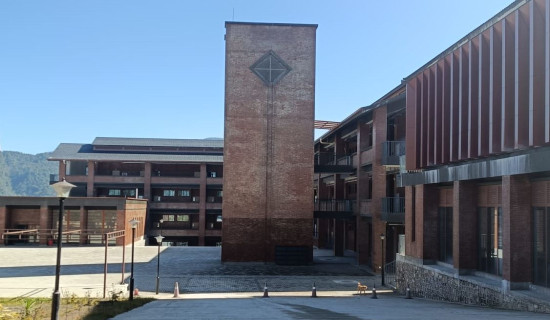- Sunday, 14 December 2025
Migration leaves Dhankuta villages desolate
BY KABI RAJ GHIMIRE,Hile, July 18: Around two decades ago, Banduke Danda in Kurule of Chaubise Rural Municipality, Dhankuta, was home to more than 50 families from diverse castes, including Chhetri, Brahmin, Limbu, Tamang, and others.
However, due to migration, the population has now significantly decreased, leaving only 28 families. All those who migrated belonged to the Brahmin and Chhetri castes. Consequently, the area no longer has any residents from these two castes.
Recalling that the settlement had homes of people from diverse ethnic groups, Dirga Bahadur Tamang, a local, said that the village has now families from only Limbu and Tamang communities.
"Earlier, it was inhabited by all castes, then gradually Brahmins and Chhetris started migrating, and we are the only ones left," he said. "Thinking about the problems in the village, I also want to migrate. But, this is my birthplace and I can't abandon it."
Similarly, a few years ago, Bajthala in Ward No. 4 of the rural municipality had around 30 families, with an equal distribution of the Brahmins and Tamangs. Now, with the exception of one or two Brahmin families, all the remaining inhabitants belong to the Tamang community.
Krishna Bahadur Tamang said that Pauwa of the same ward was also left with only a few Yakha families. The situation is similar in other areas of the rural municipality. The majority of those who migrated from the district were of the Brahmin caste, followed by Chhetri, Newar, Yakha, and Rai castes. According to the 2011 census, Dhankuta's population was 163,412. However, by 2021, the population decreased by 12,813 and fell to 150,599.
The populations of various castes also experienced a reduction. Brahmin population dropped to 29,969 in 2021 from 33,253 (2011). Similarly, there were 33,253 Chhetris in 2011 which fell to 29,969 in 2021. Likewise, the population of Rai has decreased by around 7.63%, Newar by 12.63%, Yakha by 12.11%, Tamang by 5.73%, Limbu by 2.45% and Magar by 2.36%.
Gopi Krishna Bhandari, a Chhetri man from Kurule, said that Brahmins and Chhetris might have migrated more frequently due to their nomadic nature.
He said, "I'm not sure about my ancestors' origins and why they settled here. Many from my generation have already left the village, and I'm uncertain where my grandchildren will eventually reside."
Dinesh Adhikari, Associate Professor of Rural Development Department of Dhankuta Multiple Campus, said that Brahmins and Chhetris tend to migrate more than other castes, driven by the opportunities and advantages offered by new places. In contrast, economic constraints and strong attachments to their ancestral homes deter Dalit communities from migrating.



